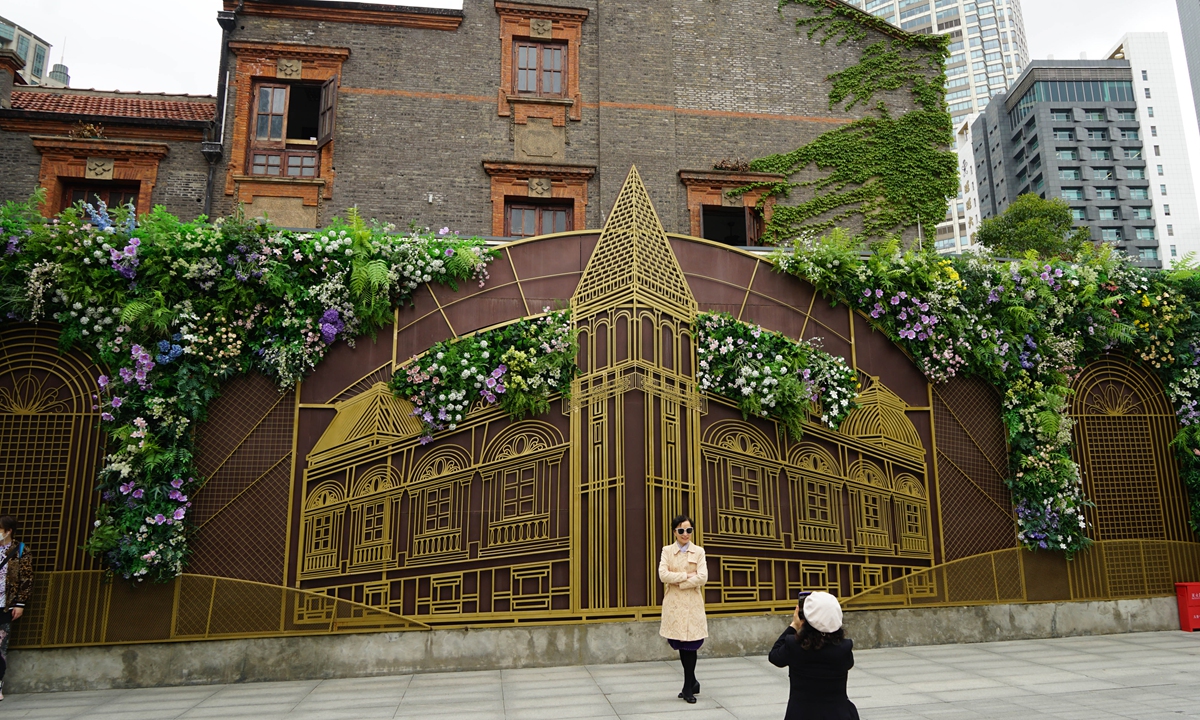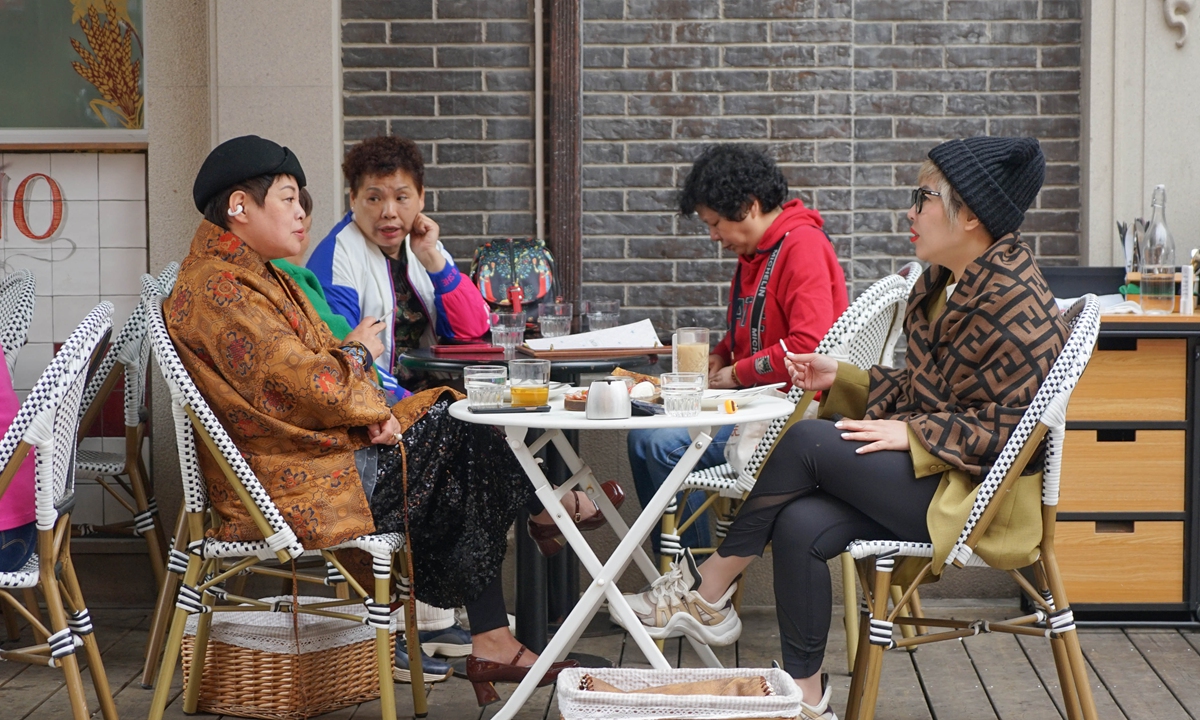
A visitor poses for a photo at the newly restored Zhang Yuan in central Shanghai. Photo: Lu Ting/GT
Shanghai resident Man Lichu couldn't believe his eyes when he reentered Zhang Yuan, or Zhang's Garden, after moving from there four years ago.
"It's so beautiful now. A completely new look," the excited 60-year-old told the media.
Zhang Yuan, a popular 141-year-old architecture complex in Shanghai, has been partly reopened to the public after a period of restoration, turning from an old residential area to a comprehensive commercial and cultural landmark.
Including former residents like Man, some 25,000 people visit the restored Zhang Yuan every day. Many of them are pleasantly surprised by the renovated buildings, doors, windows, mosaic tiles corridors and other historical elements, most of which have been kept intact.
Zhang Yuan is regarded as a new example of protective urban historical architecture restoration.
"We tried to preserve as much as possible what it originally was," said Chu Feng, general manager of the Shanghai Jing'An Construction and Decoration Co Ltd, who led Zhang Yuan's restoration project.
"We wanted to keep this treasure full of stories and memories," Chu told the Global Times.
Neoclassical buildingDating back to 1882, Zhang Yuan is hailed as the "Best Garden in Shanghai" for its numerous
shikumen houses, or sometimes referred as Shanghai-style lane houses, and several unique buildings that creatively integrate Chinese and Western elements, such as traditional Chinese-style wooden carved windows and fireplaces decorated with green glazed bricks.
The W12 building in Zhang Yuan, for instance, was listed as one of Shanghai's outstanding historical buildings for its exquisite structural design and diverse decorative details, said Chu.
"The building designed by British architects Graham-Brown and Wingrove is a neoclassical architecture made of wood and bricks," he explained.
"It is partly in baroque style and has a square in the front. The walls and cabinets on its second floor were made of very beautiful carved wood veneers."
Covering an area of some 60,000 square meters in the city center, Zhang Yuan also witnessed the modern cultural development and social progress of Shanghai and China in the past century, Chu told the Global Times.
China's greatest reformers and educators in the late 19th century and early 20th century, including Sun Yat-sen and Cai Yuanpei, often delivered patriotic speeches at Zhang Yuan.
"People rode Shanghai's first-ever bikes and used the first-ever electric lamps in Zhang Yuan," Chu added.
However, Zhang Yuan gradually became a crowded residential area since the 1950s, when factories and workshops were built nearby.
Man, who had been living there for more than 60 years before moving away, recalled the early years of his living in an 18-square-meter room together with six family members.

Well-dressed senior citizens enjoy their afternoon tea in Zhang Yuan, Shanghai. Photo: Lu Ting/GT
Protective measuresTo better preserve and use this historical landmark and to offer local residents better living conditions, Shanghai's municipal government started a protective restoration project for Zhang Yuan in 2018, the first of its kind in the city.
Restoring Zhang Yuan, which required renovating its 42 buildings with a total of 2,053 rooms while retaining their original elements and details as much as possible, was not an easy task for Chu's team.
"We faced a lot of challenges during the renovation," Chu recalled.
A major challenge was to restore Zhang Yuan as it once was.
To get more details of Zhang Yuan's buildings through history, Chu's team spent more than three years collecting previous architectural plans, historical materials and old photos from different historical periods, thus creating archives for almost every building involved.
"For the W12 building, we made an archive of more than 400 pages to detail its structure, design, characteristics and the techniques used in some important parts," Chu said.
Another challenge was to add modern functions to the century-old buildings, such as installing fire-proof and security facilities, without damaging the building's original basic structures and appearances. Chu's team proposed many ideas to better hide the in-aesthetic wires, pipelines and security cameras.
"We put some of the fire sprinkler pipes into the steps between floors, or hid some into the decorations of out-of-use fireplaces and chimneys," Chu told the Global Times, adding that all these ideas were little "bursts of inspiration" they had during the restoration process.
After years of hard work, Zhang Yuan's 19,000-square-meter western part opened to the public in December 2022, displaying its new identity of a commercial complex, with stores of many famous international brands.
Its larger eastern part, which is still under renovation, will mainly include hotels, apartments and creative office spaces; this section of Zhang Yuan is scheduled to open around 2027 after the restoration work will be completed, Chu said.
New cultural venues such as art centers and galleries will be set up in Zhang Yuan's northern and southern parts, he added.
Zhang Yuan is expected to become one of Shanghai's distinctive commercial and cultural landmarks in the city center after restoration.
"For now, the completed western part has met, or even exceeded, our expectations," concluded Chu.





